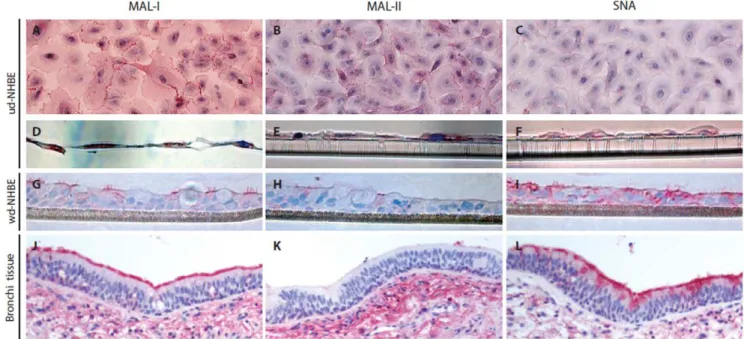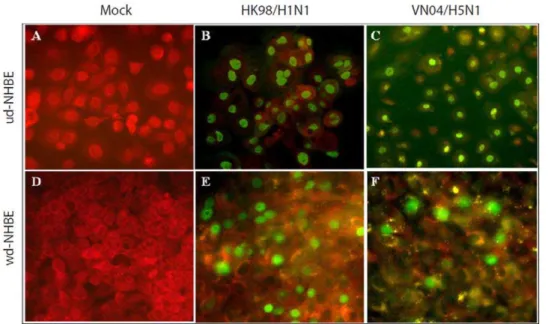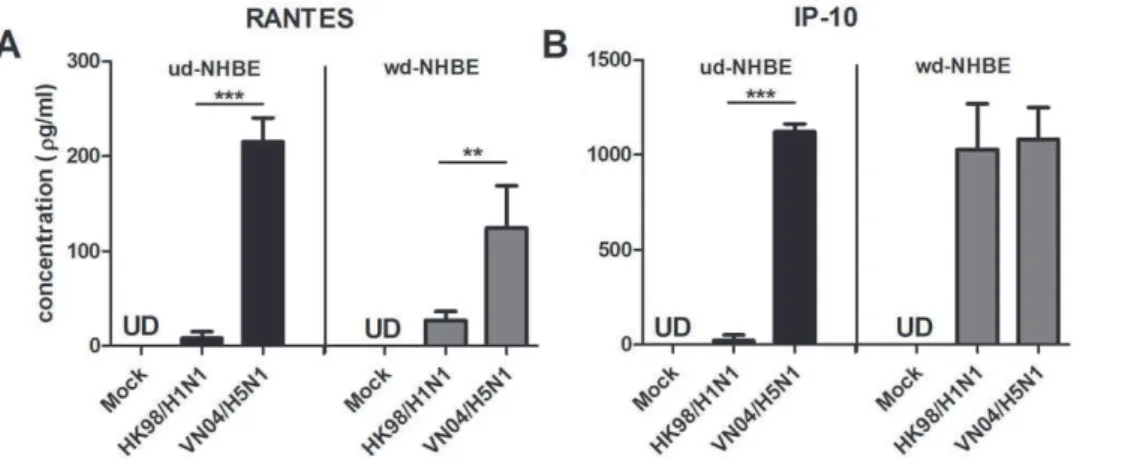Influenza H5N1 and H1N1 virus replication and innate immune responses in bronchial epithelial cells are influenced by the state of differentiation.
Texto
Imagem




Documentos relacionados
Methods and Findings: The activity of DAS181 against several pandemic influenza A(H1N1) virus isolates was examined in MDCK cells, differentiated primary human respiratory
aeruginosa reduced VX-809, and VX809 + VX-770 stimulated Cl secretion in a CF cell line (CFBE cells) and in CF primary cultures of human bronchial epithelial (HBE) cells homozygous
Effect of cigarette smoke on the permeability and IL-1beta and sICAM-1 release from cultured human bronchial epithelial cells of never- smokers, smokers, and patients with chronic
aeruginosa, containing secreted virulence factors, induces ER stress in primary bronchial epithelial cells as evidenced by splicing of XBP1 mRNA and induction of CHOP, GRP78 and
The adaptive immune response to seasonal influenza viruses has been extensively characterized using a murine model of intranasal (I/N) infection with mouse-adapted influenza
Methods: Normal human primary breast epithelial cells and immortalized non-malignant mammary epithelial MCF-10A cells were grown in a three-dimensional overlay culture on
This endobronchial spread requires apical infection of differentiated human bronchial epithelial cells and apical release of infectious virus progeny as demonstrated for HAdV-B14p1
In the present study, we compared a influenza A(H1N1)pdm09 virus, a seasonal H3N2 strain and a prototypic H1N1 strain, and examined whether immunosuppression is involved in the